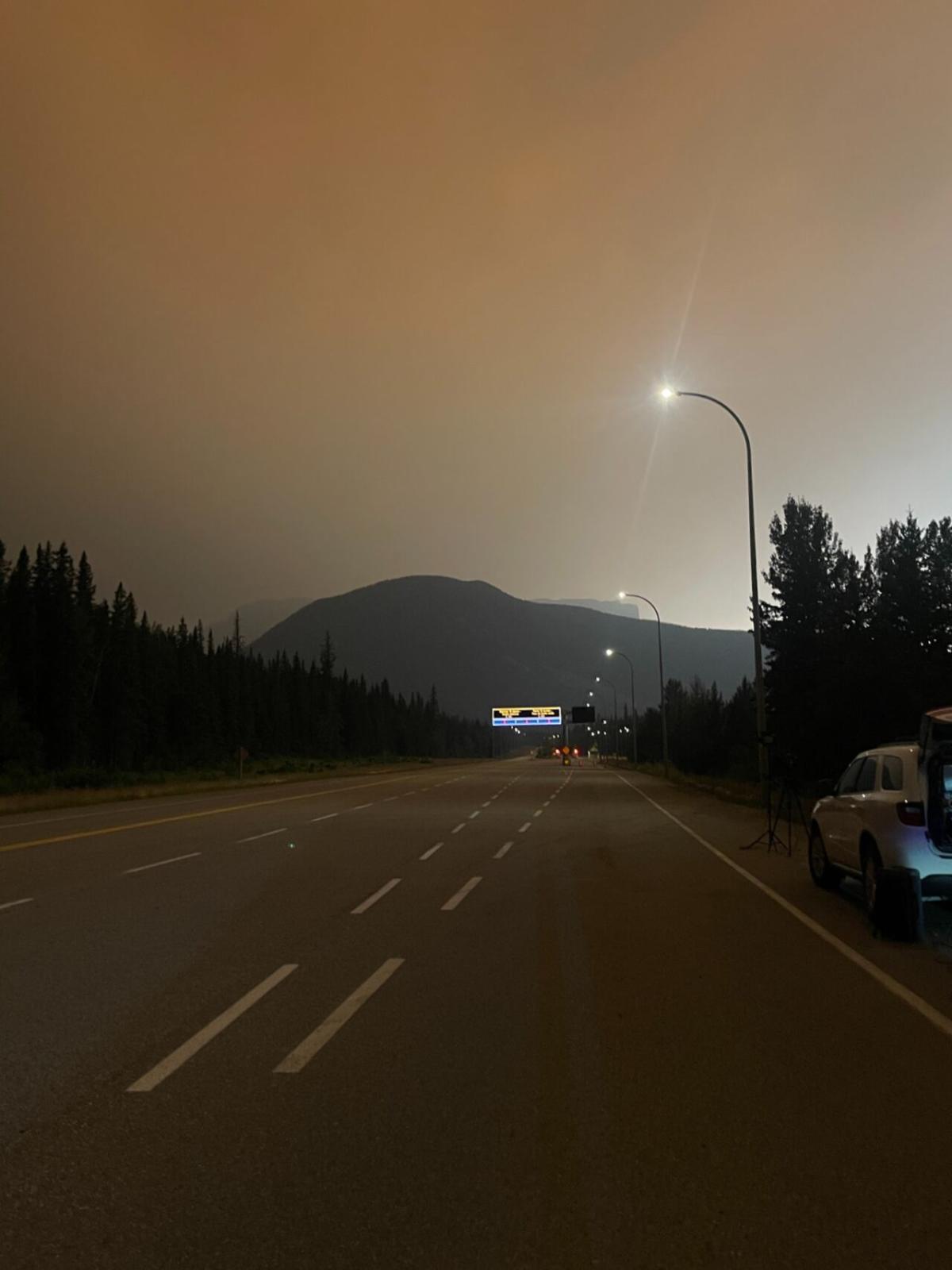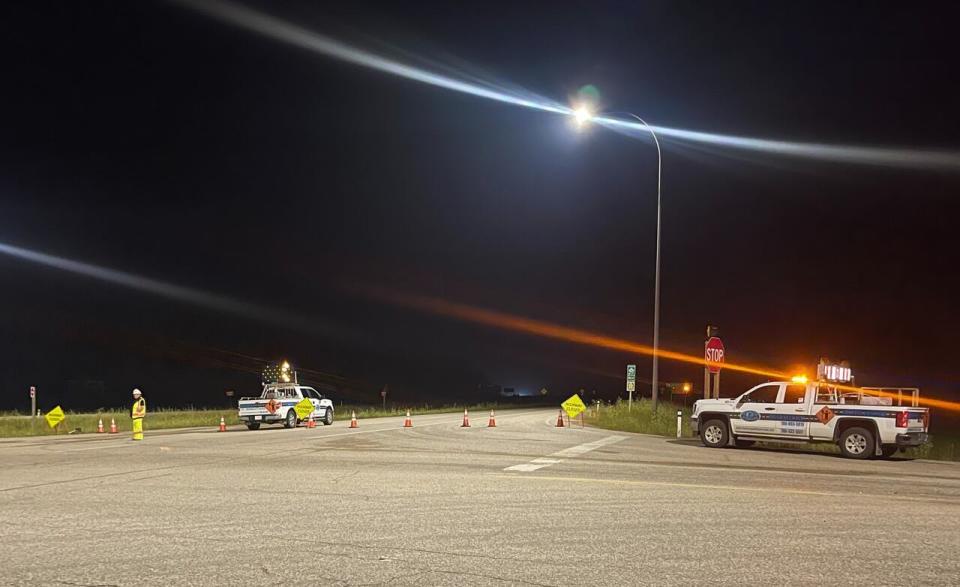Sports
Jasper needs security protection before Highway 16 can reopen, Parks Canada says

Reopening the Trans-Canada Highway through wildfire-ravaged Jasper hinges on preparing security teams to keep travellers out of the town, the superintendent of Jasper National Park says.
“Highway 16 is in good shape,” park superintendent Alan Fehr said in an interview Monday on CBC Edmonton’s Radio Active. “All the bridges are in good shape.”
Parks Canada has been assessing the stability and condition of roads and bridges as part of a look at how all infrastructure in the 11,000-square-kilometre park has fared during the wildfire, which is still burning out of control.
The stretch of Highway 16 through Jasper has been blocked from just west of Hinton to the B.C. border since the evening of July 22, when Parks Canada and the municipality issued a mandatory evacuation order for the national park.

A barricade at the intersection of Highway 16 and Highway 40 just west of Hinton is preventing traffic from travelling toward Jasper. (Travis McEwan/CBC)
Less than 48 hours later, a wildfire likely sparked by lightning reached the townsite, destroying about a third of the buildings in the municipality. Parks Canada is still tallying the damage to the rest of the park.
Alberta Transportation and Economic Corridors Minister Devin Dreeshen had a phone call scheduled with his federal counterpart on Tuesday to press for the road to reopen, “even on a restricted scale to allow commercial vehicles to pass through the park without stopping,” Dreeshen’s press secretary, Jesse Furber, said in an email.
Parks Canada decides whether to close or open the road.
He said Highway 16 is a vital economic corridor and that taking alternate routes adds time and cost to every trip.
“We want to keep safety in mind, but will consider all options to ensure the flow of goods can move along the corridor as soon as possible,” Furber said.
He didn’t say what other options the Alberta government has at its disposal.
With fire threatening Jasper from the south and the east last week, evacuees were told to head west to Valemount, B.C., and beyond. Reaching Hinton, where other displaced Jasperites have gathered, would take a 12-hour drive by other routes. Valemount to Hinton is usually a 200-km drive.
“Teams continue to plan for the facilitated movement of evacuees through Jasper National Park when it becomes safe to do so,” Parks Canada wrote in a Tuesday afternoon update. “More information will be shared when available for those looking to travel from the Valemount area to Hinton in order to reunite with friends and family.”
The agency hasn’t provided a timeline for offering such escorted travel through the park.
A 150-kilometre stretch of Highway 93 (the Icefields Parkway) and a parallel stretch of 93A between the Jasper townsite and Saskatchewan River Crossing are also closed.
Highway 16 is a key link between Edmonton and communities in interior B.C., for shipping goods and travel for medical appointments, among other needs.
Alberta Highways data says a weighted average of 5,600 vehicles travel daily on Highway 16 between the east Jasper National Park gate and the intersection with Highway 40 near Hinton. That number jumps to 7,360 daily vehicles in the summer months. About 20 per cent of those vehicles are commercial, and most of those are tractor-trailers.
Park superintendent Fehr said Parks Canada is working on a security plan to open Highway 16, but prevent people from entering the Jasper townsite, “and ensure that we don’t get people going into properties or into the town with there being no one present and no police presence or security of any kind.”
He did not provide a timeline for the opening.
Prolonged closure could affect deliveries
Doug Romanuk, vice president, sales and emerging markets for Bison transport, says the closure is workable for now because semi-trailers have other routes to get to western Canadian destinations — even if it takes longer and costs more.
He compared the situation to the November 2021 atmospheric river that prompted mudslides, damaging most major highways across southern B.C. Some of those roads didn’t reopen for all vehicles for two months.
Long-haul carriers moving loads from Edmonton are diverting through Calgary to reach Vancouver, he said.
“Our hearts are more with the people of Jasper that have been displaced than it is with how we have to divert, or do things differently with getting freight from A to B,” he said.
Regional shipments to smaller centres like Prince George, B.C., are more likely to be affected, said Robert Harper, president of the Alberta Motor Transport Association.
“If it remains closed a lot more, there’s going to be a backup of goods,” Harper said. If trucks have to travel further to make the same deliveries, companies would need a larger fleet to stick to their schedules, he said.
Many consumer goods, such as groceries, ship to interior B.C. from Edmonton, Harper said. Companies might have to ship goods from Vancouver instead, he said.
The priority has to be ensuring any drivers travelling in the Jasper area are safe to do so, he said.
“The industry will make it work,” Harper said. “The longer the longer it goes, it just means that it’s going to be further strain onto the logistical network.”










